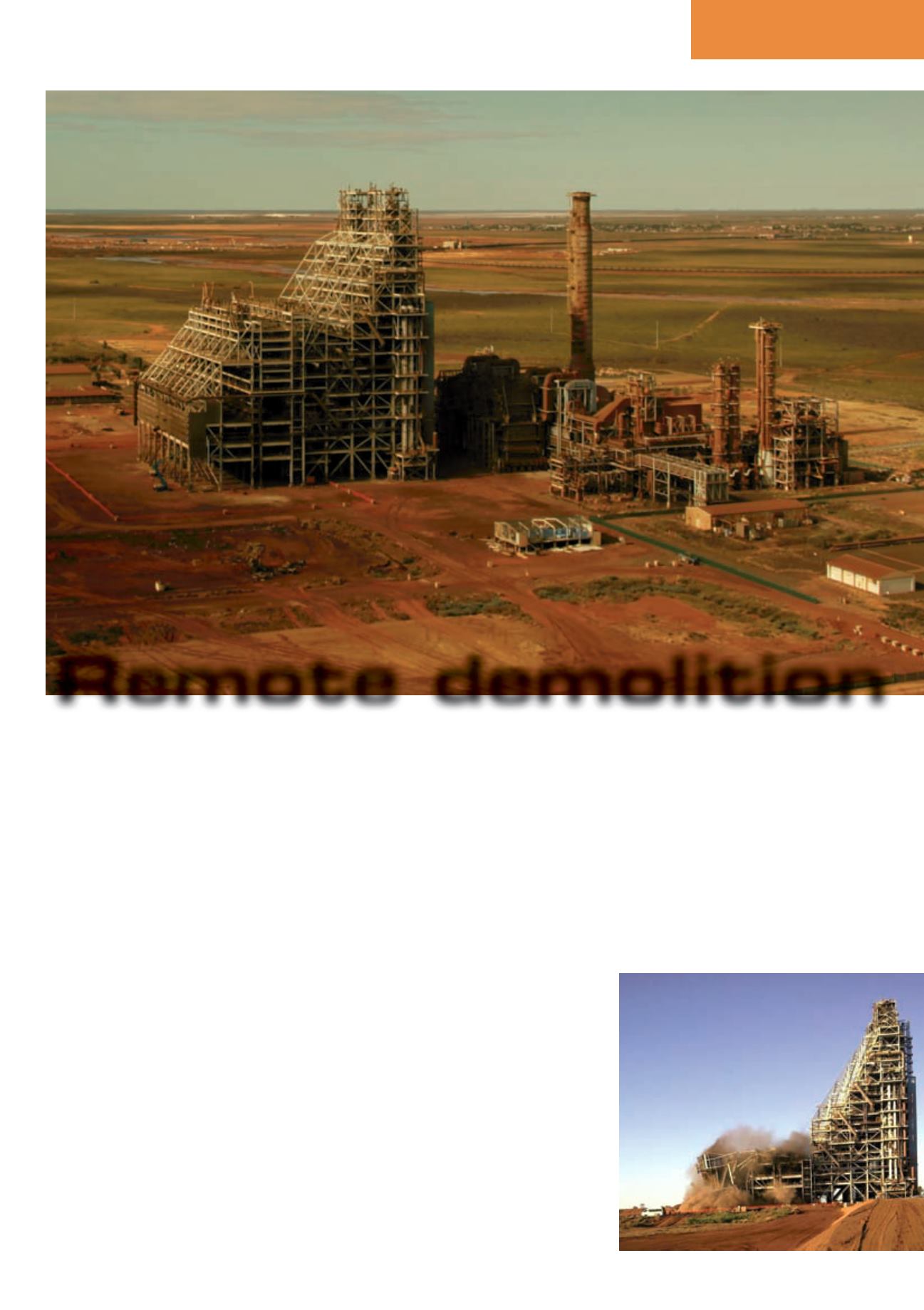
29
d
&
ri
NOVEMBER-DECEMBER 2013
Liberty Industrial faced a major challenge when it won the contract to demolish the
Boodarie HBI plant located in a remote region of Australia.
D&Ri
reports on the
project, which was shortlisted for the 2013 Industrial Demolition Award
T
he Boodarie HBI plant was an iron ore
processing facility and one of the largest,
most complex demolition projects
undertaken by any demolition company in
the southern hemisphere over the past 15
years. HBI (Hot Briquetting Iron Ore) was
designed to make briquettes out of iron ore
fines. Located in Port Hedland – one of the
most remote regions of north western Australia
– the site was built to withstand cyclones and
earthquakes. The main HBI site (Stage 1) and
the Beneficiation plant (Stage 2) encompassed
the entire ‘Boodarie Closure Project’. With
structures that towered 100 m (328 ft) high,
and comprising over 25,000 tonnes of steel, the
Liberty Industrial demolition team demolished
the main HBI site with precision within the
first 12 months, and the Beneficiation Plant
within the next seven.
The main HBI site consisted of three main
structures: a 65m (198 ft) high briquette
structure, the 100 m high reactor structure, and
a 40 m (132 ft) high gas plant. Liberty utilised
its fleet of excavators including the largest
demolition excavator in Australia – a 230 tonne
Liebherr 994 complete with the largest set of
extreme weather on the planet, including
winds that can top 250 km/hr (155 mph). The
structure was built to withstand a Category
Five cyclone, so it was built to withstand
extreme conditions.
To minimise the inherent risks associated
with the demolition of the HBI structures,
Liberty made use of the Extreme Loading
Remote demolition
SITE REPORT
The HBI plant at Boodarie was located in one of
the most remote regions of north-west Australia
grapple attachments ever made by Embrey’s
Australia at 14 tonnes, an EX1200 Hitachi and
a series of 70 tonne, 46 tonne and 36 tonne
Volvo processing excavators all equipped
with the latest Genesis shears and grapple
attachments from Embrey’s
This high profile project was a landmark
facility for the Pilbara region of Western
Australia, and one that was within client BHP
Billiton Iron Ore’s top 10 world-wide risks due
to the presence of significant quantities of the
highly reactive material, direct-reduced iron
(DRI). DRI has the ability to generate hydrogen
gas when exposed to water or heat. This posed
a significant risk to the demolition team, as
quantities of DRI remained in confined spaces
such as pipe work or vessels.
APPROACH TO DEMOLITION
Commencing in May 2011, the main Stage 1
structures had to be on the ground by early
November, as November to April is cyclone
season in the Pilbara – potentially dangerous
conditions for demolition activities. The plant
was situated in the middle of the cyclone belt,
in an area that experiences some of the most
The briquette building
falls after cutting
weakened the structure
and excavators pulled it
down


